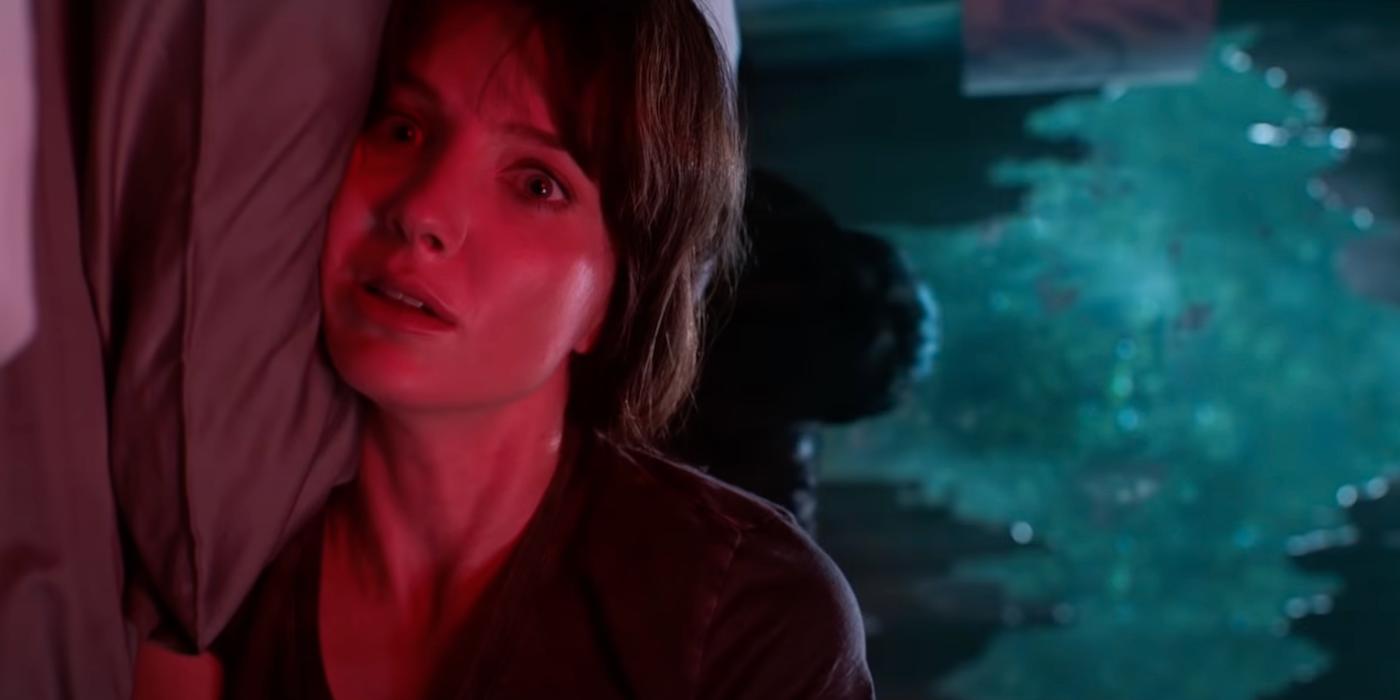What to Watch Verdict
'Malignant' is a marvelously unhinged plunge into this messy, madcap, merciless horror tale that's everything from chillingly atmospheric to excitably action-packed.
Pros
- +
📺 Where it stops, nobody knows.
- +
📺 Thrills are consistently entertaining.
- +
📺 Takes risks outside what's popular by studio standards.
- +
📺 Undeniably fun.
Cons
- -
📺 In no way Wan's cleanest.
- -
📺 Will lose audiences in need of more structure.
- -
📺 You just have to hold on.
What can I say about James Wan’s Malignant that hasn’t been waxed millennium-poetic about some of my favorite quintessentially aughts horror films? Wan resurrects the very horror trends he interrupted with Saw and the torture-porn era, playful like a freak off his leash. Expect a return not only to Wan’s nostalgia twilight of Dead Silence and Death Sentence, but a revival of late 90s slash early 00s horror like FeardotCom, Stay Alive, or Dark Castle showboats like House On Haunted Hill and Thirteen Ghosts. If we’re talking about bonkers energy in cinema? Malignant brings that sensationally big swinging, extra butter, “why the f#ck not” attitude, which feels like its trolling popular A24 genre models—helmed by James Wan so composure still (somehow) sustains.
Annabelle Wallis stars as the maritally abused, adopted from trauma Madison Mitchell, haunted by a ghost from her past. Well, maybe it’s more physical than spiritual since Madison begins teleporting to murder scenes thanks to her childhood imaginary friend Gabriel. Madison’s stepsister Sydney (Maddie Hasson) teams with detective Kekoa Shaw (George Young) and his lollipop-lickin' partner Regina Moss (Michole Briana White) in hopes their investigation will eradicate implications that Madison is a secret serial killer. A trip to the shuttered Simion Research Hospital reveals—awe hell. To quote an icon of our generation, “this shit is bananas,” and you’ll have to trust me.
Where Dead Silence represents an early-era Wan where he’s toying with signature stylistic flourishes that would eventually define films like Insidious and The Conjuring, Malignant is a reflection on past accomplishments. Those nerve-racking lingers down shadowy hallways that haunted house filmmakers have unsuccessfully aped since The Conjuring are ignored for something different—Wan unleashes an arsenal that blends ninja-agile action with supernatural forces summoned by emotionally calloused origins. Gabriel isn’t a whispering entity shielded from camera views until a payoff finale, and that harkens back to a full-throttle period of horror that united big budgets with glorious camp before and soon after Y2K paranoia. Call back to Dead Silence, and we’re met with a gruesome death sequence in mere minutes—Wan minces no intentions in this thrill-a-minute rollercoaster that’s stuck blasting zero G’s.
The overhead dollhouse chase sequence. The Evil Dead camera whoosh over staircase steps. This is why we let filmmakers have some goshdang fun after billion-dollar successes.
What’s enthralling is how Malignant is continually a horror movie that adores horror movies. Joseph Bishara’s score echoes the screeches of Harry Manfredini’s Friday The 13th score along with quintessential Saw rhythms while remixing Seattle’s alt-rock impulsions (Pixies meets Camp Crystal Lake). Cinematographer Michael Burgess blends Giallo color saturations like crimson fluorescent beams piercing through bedroom shadows while capturing chaotic Crank or Shoot ‘Em Up diversions as Gabriel slaughters police officers amidst backflips, contortionist lunges, and unnatural crabwalks. Certain scenes feel like Wan just decides choice production designs look spooky so they’re included—a tour through Seattle’s historical underground, abandoned stagecoaches, foreclosed institutions on cliffsides—and it works in the film’s favor. There’s something so energizing about Wan’s dedicated atmospheric table-setting when it comes to feeling creepy-chic with such effortlessness, especially when spooky treats fly toward you at ramming speeds. It’s a hybrid approach that, against all odds, Wan champions.
The thing is, Malignant ain’t perfect. Wan’s desire to unlock a Northwestern Pandora’s Box that keeps spewing nightmares is sometimes his enemy. Gabriel’s abilities manifest out of nowhere from mental imprisonment, teleportation through landscape disintegration, to even more insanity you’ll witness. Wallis flexes heavy-lifting muscles as a character discovering the locked-away recesses of her broken psyche, and there’s an arc wholesomeness Mike Flanagan would respect. That said, Wallis' performance is never fully allowed to breathe between needle-drops that sometimes steal the mood. Maddie Hasson swipes a few scenes herself, whether costumed as a princess while on break from a Disney theme park knockoff (presumably) or braving cobwebs in any horror character’s worst decision (let’s go alone to the dark, scary facility). It’s all in line with the narrative’s commitment to servicing exhilarating shocks, and that’s so rewarding for someone like me who craves horror directors taking those grand, sell-it-or-fail swings—but it’s also indebted to stereotypical fillers that don't match singular rushes of excitement.
Here’s my favorite paragraph—is Malignant blood and frightening? Hell yeah does Wan appease our bloodlust fetishes once Gabriel becomes the vengeful, angular assassin that stabs, stuns, and breaks bones (piercing through flesh) like they’re calcified brittle. It’s backloaded with gore effects—that visually appear CGI’ed, although searches suggest practical applications colorize to animation tones—to get juices flowing right out of gnarly slasher wounds. It’s not particularly terrifying, but what Wan and co-storytellers Akela Cooper and Ingrid Bisu commit to screen is a mutated medical monstrosity that will be remembered for years to come nonetheless. Mix that with all the giddiness of dagger-shaped physician awards stabbing through doctors, hospital security (Mike Mendez!), and women criminals named Scorpion (Zoë Bell with a mullet!) alike? This is Wan breaking the proverbial dam and dancing under the waterfall that is his third act, gleefully hop-skipping under a cascade of repugnance sure to tickle audiences seeking voracity unparalleled.
The latest updates, reviews and unmissable series to watch and more!
Malignant isn’t James Wan at his most refined or sharpened, but it’s unapologetically the horror maestro at his zaniest, highest-reaching, and most absurdly enjoyable. When I want to be scared shiverless, I’ll watched The Conjuring or Insidious or Dead Silence. When I’ve got the Friday night crew over, I’m throwing on Malignant and we’re drinking every time the background dream-fades into another room or Gabriel’s Shocker powers inexplicably exist. Some will argue a better movie might pay closer attention to Gabriel’s manipulation of electricity or massage the film’s wildness with further continuity care, but that would also hamper the gothy, breakneck violent, renegade outlandishness with which Malignant brazenly indulges its madness. Blessed be the confident ones, especially when you’re as talented as Wan—nonsense becomes the new en vogue spectacle in the hands of a horror master.
Matt Donato is a Rotten Tomatoes approved film critic who stays up too late typing words for What To Watch, IGN, Paste, Bloody Disgusting, Fangoria and countless other publications. He is a member of Critics Choice and co-hosts a weekly livestream with Perri Nemiroff called the Merri Hour. You probably shouldn't feed him after midnight, just to be safe.


